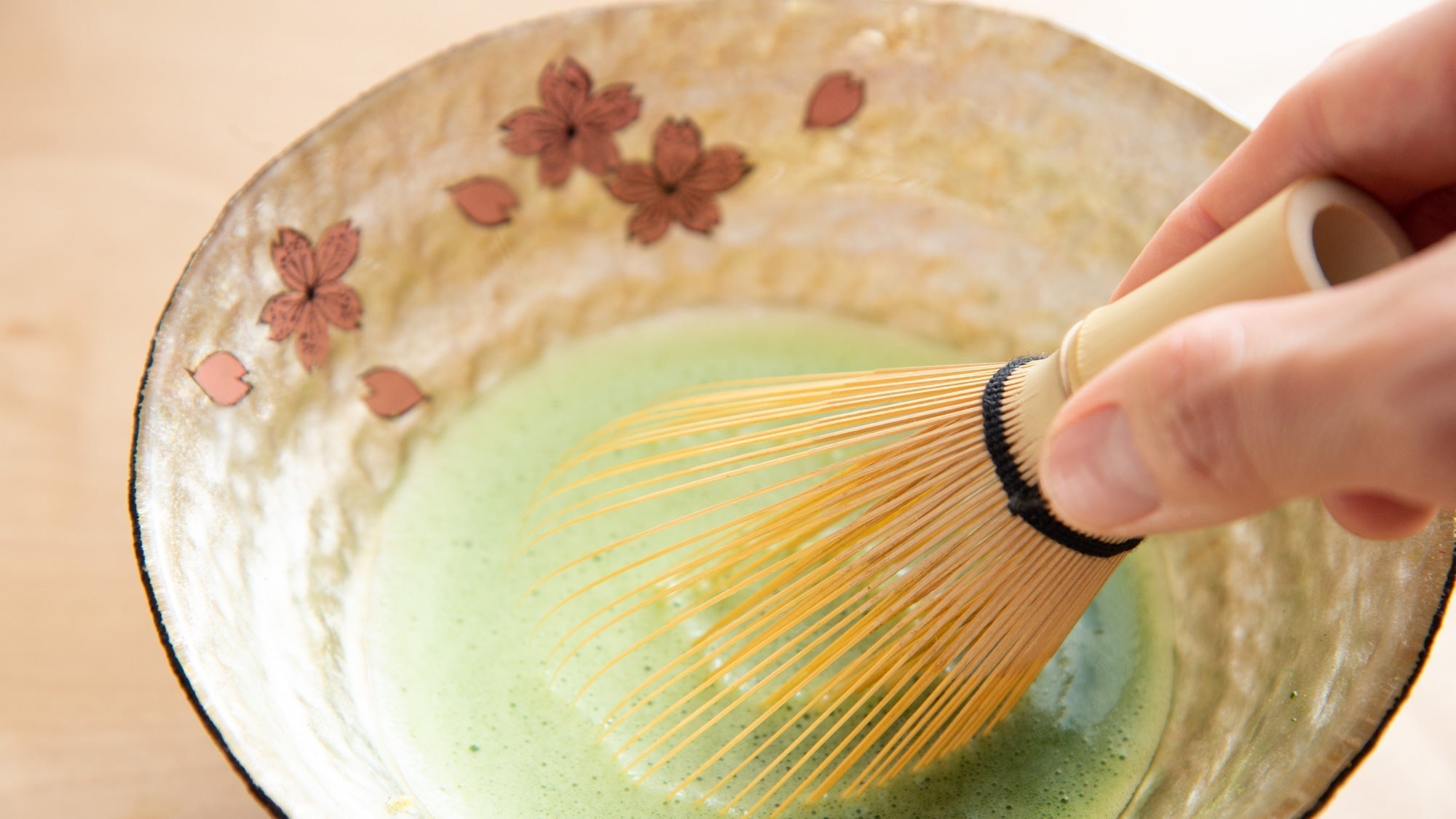
How to Care for Your Chasen
Written by Team MUSUBI
In the world of chado, the Japanese way of tea, every detail and utensil is chosen with deliberate care, imbuing every moment with authenticity and depth. Among these carefully selected tools, the chasen is regarded as a key item, shaping the final finish of the matcha served. This elegant bamboo tea whisk draws one in with its functionality and its unique design, featuring intricately crafted bristles in a gracefully curved silhouette.
However, due to its delicate design, proper care is essential for prolonged use and to preserve its meticulously crafted form. This guide will introduce you to the chasen, offering instructions on its care to enrich and elevate your matcha experiences.
tables of contents
Roots of the Matcha Whisk
Before diving into the care instructions, explore some historical backdrops about the chasen.
While the exact origin is not clearly documented, its creation is deeply intertwined with the history of Japan's tea culture, tracing back to the Muromachi period (1336 CE-1573 CE). It is said that Murata Juko (1423 CE -1502 CE), hailed as the founder of wabi-cha—a philosophy embracing simplicity and austerity in tea preparation—initiated the use of a utensil specifically for stirring matcha, leading to the development of this unique tool.
The first chasens were crafted in Takayama, located in what is now Nara Prefecture. Today, over 90% of Japan's chasen production takes place in the town of Takayama in Ikoma City, Nara Prefecture.
Understanding Its Form

Traditionally made from a single piece of bamboo, a chasen is a culmination of curved tips that unfold into a series of fine bristles, divided into inner and outer layers. These bristles are expertly shaped and curled to whisk matcha powder for usucha, thin matcha tea, and to "blend" the matcha powder with less water for koicha, a thicker paste-like tea with a beautiful gloss.
The craftsmanship of a chasen is evident in its intricate components:
ho: The delicate bristles of the whisk. The outer ones are named soto-ho and the inner, uchi-ho. The tip of the inner bristles is specifically named chajime and helps to mix the matcha left on the very bottom of the matcha bowl.
fushi: The node or joint of a bamboo stalk. This connecting section provides structural support and flexibility.
e : The handle of the chasen.
The style of a chasen can vary according to different schools of tea and the type of tea being prepared. Generally, they are categorized by the number of bristles, which can range from 60 to over 100.
Preparing Your Chasen

Before the intitial use of your chasen, gently rinse by filling a bowl with water and softly whisking the bristles. It's important to avoid rinsing it under running water, as this could lead to accidental damage or rust from bumping against the faucet.
Next, in preparation for making a bowl of matcha, immerse the bristles in lukewarm water for a couple of seconds. This step enhances the elasticity of the bamboo. This added flexibility will ensure you will be able to whisk up your matcha to perfection, smooth and frothy.
Caring for Your Chasen


The longevity of your chasen is closely linked to how it is stored, given its sensitivity to environmental conditions due to its natural bamboo construction. Ensuring it is kept in a place with stable temperature and humidity is vital for its upkeep.

Using a matcha whisk holder is advisable to maintain its shape and protect the tines. Gently position the inner ring of bristles into the holder's hole, and rest the outer bristles on the holder's outer surface. If your chasen won't be in use for some time, ensure it is thoroughly dried before storing it back in its original case.

Properly clean and store your tea whisk for creating the perfect bowl of matcha whenever needed.
Compared to other tea utensils, the chasen wears out faster as its delicate tips slowly fade from the stirring inside matcha bowls. Upon the arrival of December, tea connoisseurs and enthusiasts alike gather for chasen kuyo, a ceremony brimming with gratitude, where they bid farewell to their trusted whisks by burning them at temples. It's a profound way to express respect and gratitude for their silent service.
There is something special about the gentle rustling sound of the fine bamboo tips feathering against the sides of the matcha bowl. We hope that learning about the chasen and picking up some tips on how to care for it will deepen your matcha experience and sprinkle your days with calm and happiness.







Leave a comment
This site is protected by hCaptcha and the hCaptcha Privacy Policy and Terms of Service apply.